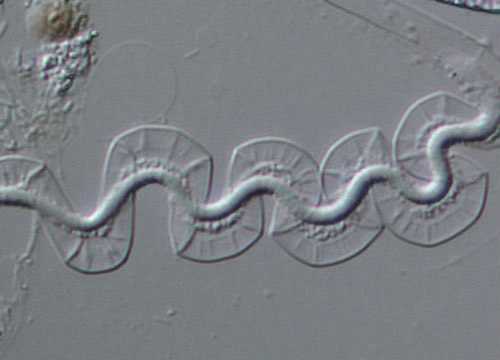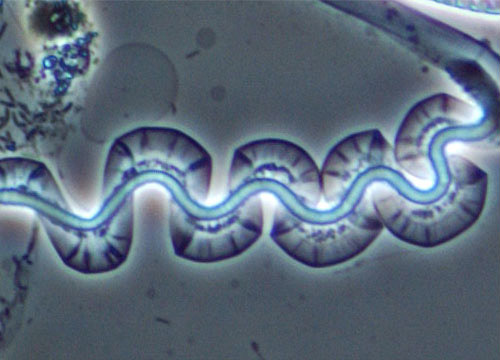Blue-Green (Spirulina) Algae
Blue-green algae growing in natural environments may be composed of numerous species. Because some of them may contain harmful toxins, Spirulina that is intended for human consumption is generally harvested from controlled ponds. In the last few decades, commercial Spirulina systems have developed in many countries, including the United States, Thailand, Taiwan, Japan, Mexico, China, and India.
 DIC
DIC
 Phase
Phase
Phase
Historically, Spirulina has been utilized as a food source for thousands of years. However, the algae did not enter into the modern limelight until the early 1980s when it was advertised as an all-natural diet pill. Although some studies suggest that Spirulina is an excellent source of protein and may have some health benefits, there is by no means a consensus on the topic. The amazing claims of miraculous weight-loss and disease recovery that are frequently present in advertisements are not supported by any clear evidence, as was noted by the Food and Drug Administration during its investigation of Spirulina products.
DIC
Blue-green algae growing in natural environments may be composed of numerous species. Because some of them may contain harmful toxins, Spirulina that is intended for human consumption is generally harvested from controlled ponds. In the last few decades, commercial Spirulina systems have developed in many countries, including the United States, Thailand, Taiwan, Japan, Mexico, China, and India. Due to interest in growingSpirulina on a small scale, the first practical startup kits have recently become available for use by small communities and home businesses.













